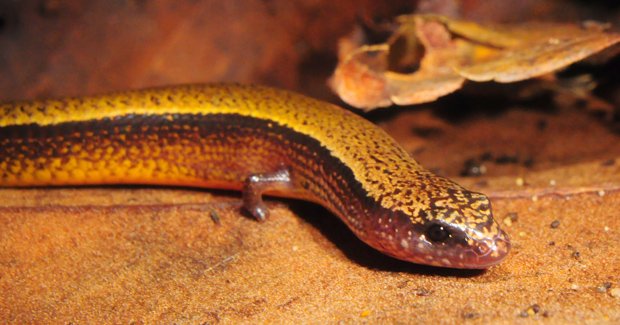Native lizard gives cancer clues

A SHY NATIVE LIZARD that lives underground holds an unlikely key to how normal human cells turn cancerous, Australian researchers say.
Bridget Murphy, a biology PhD student at the University of Sydney, discovered the link while researching the evolution of live birth in lizards. She isolated genes from three species of egg-laying lizards and three species of live bearers, looking particularly for genes that control the development of the placenta.
Serving as a link between mothers and their offspring, the placenta is rich in blood vessels. Bridget discovered a gene responsible for a protein that controls blood vessel development in one of the live bearers, the three-toed skink (Saiphos equalis), found in southern Queensland and northern New South Wales.
Surprisingly, this same gene has turned up just once before in scientific research: in a human skin-cell culture that had been exposed to cancer-causing chemicals.
“Embryos need an extensive network of blood vessels to allow them to grow; so do tumours,” says Bridget. “I found that the three-toed skink, which gives birth to live young, uses a particularly powerful protein to encourage the growth of blood vessels. The only other place where this protein has been found is in precancerous cells grown in the laboratory.”
Vital clues
The discovery may be a vital clue to understanding how cancer evolved in animals. It also serves as a useful tool in allowing scientists to disable the genes that produce these proteins.
“To find [these proteins] in a live-bearing animal as well as in normal cells that have transitioned to precancerous cells is too much of a coincidence,” Bridget tells Australian Geographic. “Perhaps it is evidence for live-bearing animals being more susceptible to cancer,” she says, stressing that this is only a theory at this stage.
“It shows that this type of research not only provides crucial information about our native fauna but can also reveal secrets about human evolution and why we are vulnerable to certain diseases like cancer,” she says.
The research was published in the Journal of Experimental Zoology in July last year and won Bridget a place at Fresh Science 2010, a national science forum that celebrates the achievements of early-career scientists.
Dr Bryan Fry, a snake and molecular-science expert from the University of Melbourne, says the study demonstrates the value of researching native wildlife.
“It’s a perfect example of the inherent value of researching widely,” he says. “It also shows the value of studying evolution at all levels; novel and useful discoveries can come from any source and molecular-evolution studies can therefore be directly useful even in regards to human medicine.”

